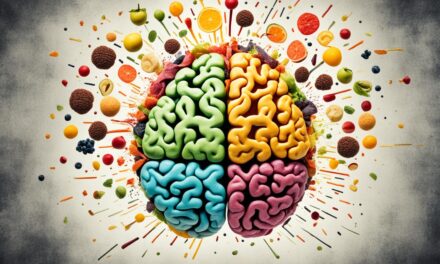Have you ever experienced the frustration of hitting a weight loss plateau? You’re diligently hitting the gym, watching what you eat, and doing everything right, but the scale refuses to budge. It’s like your body has hit a wall, and no matter how hard you push, it won’t give in. You start to question yourself, wondering what you’re doing wrong and why the results have come to a screeching halt.
Well, my friend, you’re not alone. Plateaus are a common roadblock in the weight loss journey. But fear not, for I have a secret weapon for you. A plateau buster that will shock your body back into losing weight and reignite your progress. Introducing the “Plateau Buster” technique – a game-changer that will take your weight loss to the next level.
Imagine this: You’re hiking up a steep mountain trail, the sweat dripping down your forehead. As you climb higher and higher, you come to a point where the path levels off. You can see the summit in the distance, but it feels just out of reach. Your legs ache, your lungs are burning, and you’re tempted to turn back.
But instead, you take a deep breath and gather your strength. You muster every ounce of determination and push yourself to climb even harder. With each step, you feel the burn, but you know that it’s a sign of progress. And then, just when you think you can’t go any further, you reach a breakthrough. The path steepens again, and you’re on your way to conquer the summit.
That, my friend, is exactly how the “Plateau Buster” works. It’s about shocking your body with new challenges and pushing it to its limits. It’s about breaking through that stagnant phase and finding renewed energy and progress. It’s about taking control of your weight loss journey and showing your body who’s boss.
So, are you ready to shake things up? Are you ready to shock your body back into losing weight? If the answer is a resounding yes, then let’s dive into the strategies and tips that will help you bust through that plateau and achieve the body of your dreams.
Key Takeaways:
- The “Plateau Buster” technique is a game-changer for breaking through weight loss plateaus.
- It involves shocking your body with new challenges and pushing it to its limits.
- By taking control of your weight loss journey, you can achieve the body of your dreams.
- Stay tuned for the strategies and tips that will help you revive your weight loss progress.
- Don’t let a plateau derail your efforts – show your body who’s boss!
The Difference Between Weight Loss and Fat Loss
When it comes to your fitness journey, understanding the difference between weight loss and fat loss is essential. While the scale may not always reflect immediate progress, monitoring your body composition over time is key to achieving the body transformation you desire. Let’s break it down:
Weight Loss:
Weight loss refers to the overall reduction in body weight, which can include a combination of fat, muscle, and water weight. It’s important to note that weight loss alone doesn’t necessarily equate to a healthier or more toned physique. In fact, losing weight without focusing on body composition can lead to a loss of muscle mass, making it harder to achieve a lean and fit appearance.
Fat Loss:
Fat loss, on the other hand, targets the reduction of body fat while preserving or even increasing lean muscle mass. This is the key to achieving a body transformation that not only looks great but also improves overall health and fitness. When you focus on fat loss, you’re prioritizing the development of a lean and toned physique by reducing your body fat percentage.
So, why is it important to differentiate between weight loss and fat loss? Well, think of it this way: two individuals can have the same weight, but their body composition can be drastically different. One person may have a higher body fat percentage, while the other may have more muscle mass. By focusing on fat loss, you’re working towards sculpting your body and achieving a lean physique rather than becoming fixated on the number on the scale.
Remember, there are various factors that can affect the number on the scale, including water retention and increases in lean body mass. But by tracking your body composition and progress over time, you’ll be able to see the changes happening beneath the surface.
To give you a better understanding, take a look at the table below:
**Table: Comparison of Weight Loss vs. Fat Loss**
| | Weight Loss | Fat Loss |
|—————|—————————————|—————————————-|
| Definition | Overall reduction in body weight | Reduction in body fat percentage |
| Focus | Scale weight | Body composition and muscle definition |
| Appearance | Potential loss of muscle mass | Toned, lean physique |
| Health | Lower weight, but not necessarily fit | Improved body composition and fitness |
| Long-term | Difficult to maintain without muscle loss | Sustainable, healthy lifestyle |
As you can see, focusing on fat loss rather than just weight loss can lead to a more sustainable and satisfying body transformation. By prioritizing muscle development and reducing body fat, you’ll not only achieve a leaner physique but also improve your overall health and fitness.
Individual Variation in Basal Metabolic Rate
When it comes to weight loss, understanding your body’s basal metabolic rate (BMR) is key. BMR refers to the number of calories your body burns at rest to maintain basic bodily functions, such as breathing and circulating blood. However, it’s important to note that BMR can vary from person to person due to various factors, including age, gender, and lean body mass.
While there are formulas available to estimate BMR, it’s essential to remember that they may not be accurate for everyone. Inter-individual variation in BMR is typically small, ranging from a 3% to 8% difference. This means that some individuals naturally burn fewer calories at rest than others of the same size.
To illustrate this variation, let’s take two individuals with the same body size. Person A has a BMR of 1,200 calories, while Person B has a BMR of 1,300 calories. Although the difference seems insignificant, it can play a significant role in weight loss journeys.
“Understanding your individual metabolic rate is like having insider knowledge to tailor your weight loss strategies.”
By taking into account your unique BMR, you can customize your weight loss strategies. If you have a lower BMR, you may need to adjust your calorie intake accordingly to create a calorie deficit, which is essential for weight loss. On the other hand, individuals with higher BMRs may have more flexibility in their calorie intake.
Remember, weight loss is not a one-size-fits-all approach. By understanding your BMR and how it influences your body’s calorie needs, you can devise a personalized weight loss plan that maximizes your results.
Factors Influencing Basal Metabolic Rate
Several factors can influence an individual’s BMR:
- Age: BMR tends to decrease with age due to a decrease in muscle mass and a slower metabolic rate.
- Gender: Men generally have a higher BMR than women due to higher muscle mass and testosterone levels.
- Lean Body Mass: The more muscle mass you have, the higher your BMR. Strength training exercises can help increase lean body mass.
By considering these factors, you can gain a better understanding of your BMR and its role in your weight loss journey. Armed with this knowledge, you can tailor your weight loss strategies and adjust your calorie intake to achieve your desired results.
Inaccuracies in Calorie Calculation Formulas
Calorie calculation formulas used to determine basal metabolic rate (BMR) and total daily energy expenditure (TDEE) are estimations and may not be accurate for all individuals. While they provide a starting point, it’s important to recognize their limitations.
Counting calories is a popular method for monitoring intake, but it’s crucial to educate yourself about the calorie contents of different foods. Don’t rely solely on estimation or guessing, as it can lead to errors in your calorie intake. Instead, take the time to weigh food portions and track your calorie consumption accurately.
Remember, a small discrepancy in calorie calculation can make a big difference in your weight loss journey. So, be meticulous and precise when it comes to counting calories. Accuracy breeds success!
Underestimating your food intake can unknowingly sabotage your weight loss progress. Don’t fall into the trap of guesstimating; it’s all too easy to underestimate portion sizes and forget to account for small bites or nibbles throughout the day. By tracking your calorie intake diligently, you’ll have a clearer picture of your actual consumption and be better equipped to make adjustments when necessary.
When in doubt, consult a professional nutritionist or dietitian who can help you develop personalized strategies for accurate calorie counting and achieving your weight loss goals.
Tips for Accurate Calorie Tracking:
- Use a kitchen scale to weigh your food portions.
- Read food labels carefully and pay attention to serving sizes.
- Keep a food diary or use a calorie tracking app to record your daily intake.
- Track not only main meals, but also any snacks or drinks that contribute to your overall calorie intake.
| Calorie Calculation Formulas | Pros | Cons |
|---|---|---|
| BMR Formula | – Easy to use – Good starting point |
– May overestimate or underestimate BMR – Does not account for individual variations accurately |
| Harris-Benedict Equation | – Provides a more accurate estimation of BMR – Takes age, gender, height, and weight into account |
– Still an estimation – May not consider lean body mass |
| Mifflin-St Jeor Equation | – Accurate for both men and women – Takes into account age, gender, height, and weight |
– Estimation based on average individual – May not consider lean body mass or other individual factors |
Reduced Calorie Needs After Weight Loss
So you’ve been working hard, sticking to your caloric deficit, and making progress on your weight loss journey. But suddenly, the numbers on the scale stop budging, and you find yourself at a frustrating weight loss plateau. What could be the culprit?
Well, one possible reason could be the reduced calorie needs of your body after significant weight loss. As you shed those pounds, your body becomes smaller and lighter. And guess what? A smaller body requires fewer calories to sustain its weight.
Imagine carrying a heavy backpack. As you remove items from it, the weight decreases, and you don’t need as much energy to carry it around anymore. The same principle applies to your body.
When your body undergoes weight loss, it becomes more efficient and adapts to the new energy demands. As a result, your calorie needs decrease, which can lead to a caloric deficit that is no longer sufficient for continued weight loss.
So, what can you do to overcome this hurdle and kickstart your weight loss once again? First, it’s crucial to recalculate your calorie needs based on your current body size. Many online calculators can help you determine your basal metabolic rate (BMR) and total daily energy expenditure (TDEE).
Once you have a better understanding of your updated caloric needs, you can adjust your intake to consistently create a modest caloric deficit. This means consuming slightly fewer calories than your body needs to maintain its current weight.
By creating this small gap between your caloric intake and expenditure, you’ll reignite your weight loss progress and break through that frustrating plateau.
To summarize:
- Recognize that reduced calorie needs after weight loss can contribute to plateaus.
- Recalculate your calorie needs based on your current body size and activity level.
- Adjust your caloric intake to consistently create a modest caloric deficit.
Remember, weight loss is not always a linear journey. Plateaus are normal, but with the right approach and adjustments, you can overcome them and continue your progress toward your goals.
Conclusion
If you’re looking to revive weight loss and break through plateaus, it’s time to focus on creating a lean lifestyle rather than relying on temporary diets. The key is to prioritize nutrition and fuel your body with nutritious foods, instead of depriving yourself. Remember, food is not the enemy, but rather a vital source of energy and nourishment.
Hydration is also crucial on your weight loss journey. Make sure to drink plenty of water throughout the day to stay hydrated and avoid confusing thirst with hunger. It’s amazing how being properly hydrated can help curb unnecessary snacking and keep your energy levels up.
When it comes to exercise, shift your focus to weight training. While cardio has its benefits, emphasizing weight training will help you build lean muscle mass and increase your metabolism. Challenge yourself with weights that push your limits, all while maintaining proper form to avoid injuries.
Consistency is key in achieving and maintaining a lean and ripped physique. Track your progress through body composition measurements to stay motivated and make adjustments when needed. Remember, weight loss is not a linear process, and plateaus are normal. Don’t get discouraged, but rather embrace the challenge and keep pushing forward.
FAQ
What causes weight loss plateaus?
How can I differentiate between weight loss and fat loss?
Why does basal metabolic rate vary from person to person?
Can calorie calculation formulas be inaccurate?
Why do reduced calorie needs occur after weight loss?
How can I shock my body back into losing weight?
MORE SOURCES TO READ:
- https://www.burnthefatblog.com/unexplainable-fat-loss-plateaus-explained/
- https://athleanx.com/articles/how-to-get-ripped
- https://www.gastricsleeve.com/forum/showthread.php?t=21458
![]()














Recent Comments